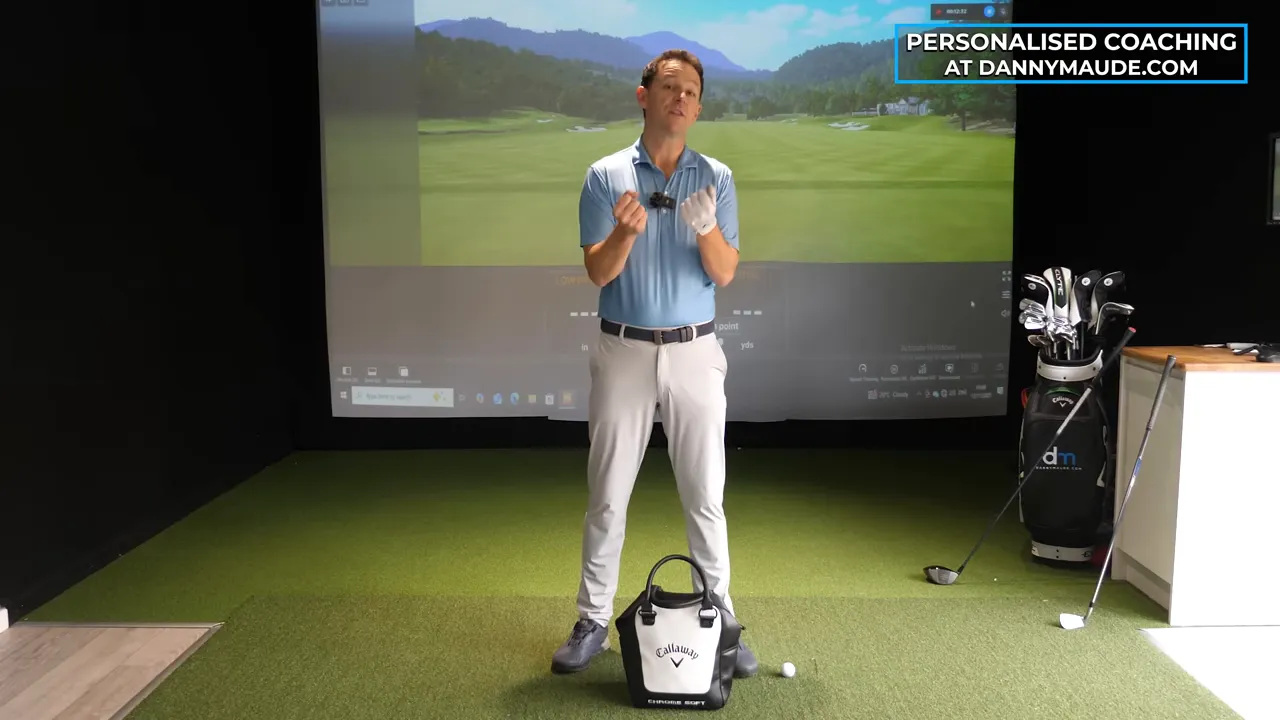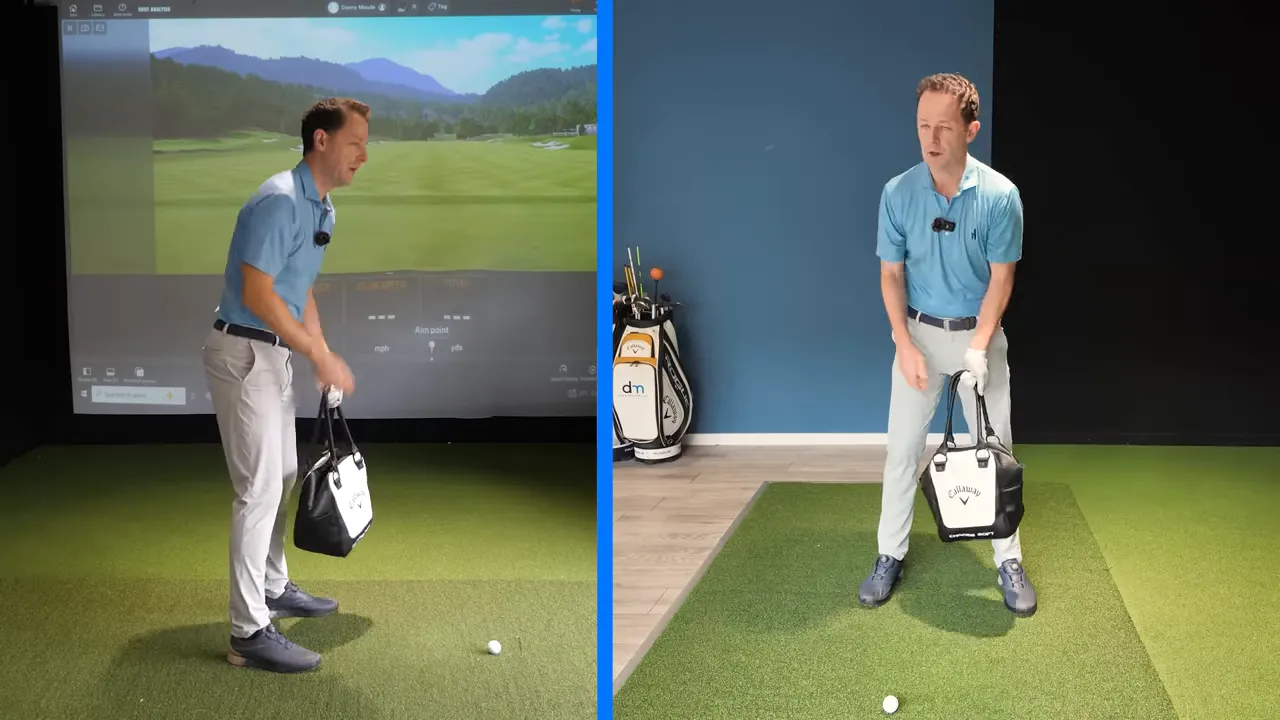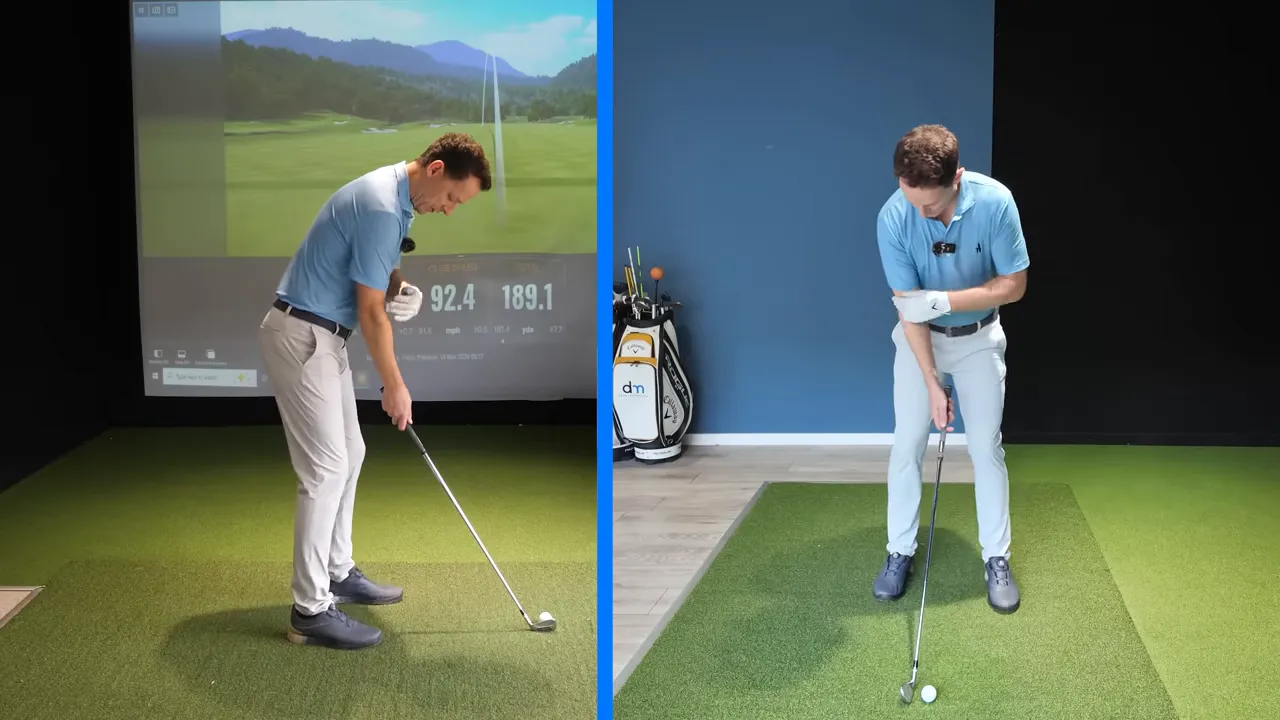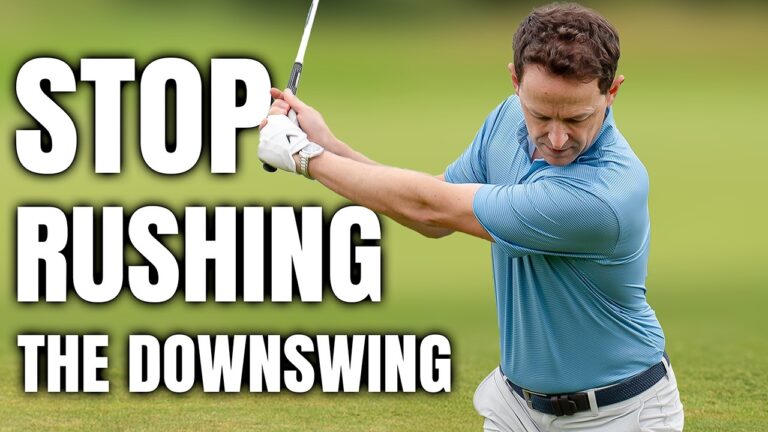
Have you ever marveled at professional golfers hitting the ball long distances with seemingly slow swings? The secret lies in rhythm and timing, combined with a series of simple drills. Learn how to unlock greater golf club speeds by ‘swinging slower’ to achieve that admired smooth and powerful swing.

Table of Contents
- Step 1: Use a Weight to Build Rhythm and Momentum
- Step 2: Control the Club Face by Letting the Club Fall
- The Rhythm You Want: One-and-Two Explained
- Why Staying Back Helps Speed
- Practical Session Plan to Build the Feeling
- How to Know You Are Improving
- Common Mistakes and Fixes
- Tips to Keep the Gains
- FAQ
- Final Thoughts
Step 1: Use a Weight to Build Rhythm and Momentum
Start with an inexpensive, high-impact training aid: a gym bag or shopping bag weighing about ten pounds. The goal is not building strength, but rather teaching your body how to create momentum with a rhythmic swing.
Why a Bag Works Better Than Practicing Swings
A heavy object allows you to feel the club’s movement through space. By using your lower body to create momentum, the bag swings more naturally. This feeling is the rhythm you need in your golf swing.

How to Set Up the Bag Drill
- Stand in your normal golf stance and let your arms hang naturally.
- Grip the bag with your palm facing out and hold it like a club grip.
- Execute a quick, straight-line backswing using your legs to initiate momentum.
- Allow momentum to lead the downswing, staying calm and letting the bag guide your hands forward.
Emphasize a rhythm of counting one-and-two, achieving a continuous swing flow.
What Most Golfers Do Wrong
Many amateurs stall on the backswing, then rush to generate speed in the downswing. This requires excessive effort. By creating rhythmic and continuous movement, your swing will appear more controlled and central, delivering extra distance effortlessly.
Progressing from the Bag to a Club
Once the bag drill establishes a rhythm, alternate between the bag and practice swings with a golf club, focusing on arm relaxation and harnessing momentum. This enhances a calm and powerful transition.
Step 2: Control the Club Face by Letting the Club Fall
With established rhythm, it’s crucial to control the club face and impact position through deliberate practice swings.
Single-Hand Trail-Arm Drill
This drill focuses on correct trail elbow positioning and clubface behavior during transitions.
- Grip the club with your trail hand only, ensuring a natural forward-hand feel.
- Relax your trail elbow to keep your arm close to your body.
- Sling the club over your shoulder, allowing it to fall naturally into place.
- Maintain the one-and-two rhythm, preventing the club from casting.

This helps keep the clubhead behind the hands and improves natural impact positioning.
Lead-Side Sling
Duplicate the actions using your lead arm for balance and correct pivot training.
The Rhythm You Want: One-and-Two Explained
Count the swing as one-and-two. The backswing (one-and) should be quick and compact, while two represents a smooth, powerful release. Achieve dynamic movement through your feet and legs, with passive arms, for surprising clubhead speed improvements without force.
Why Staying Back Helps Speed
Staying back during impact, while allowing the clubhead to release forward, boosts head speed. Forward rushing leads to speed loss. The drills encourage a centered posture, maximizing clubhead velocity.
“The more you try to control the club, the less power you have and actually the less control.”
This approach, though counterintuitive, restores both control and distance.
Practical Session Plan to Build the Feeling
Dedicate 15-25 minute sessions, 3-4 times a week, for effective motor learning.
- Warm up: Perform light stretches and short putts.
- Bag sequence: 10 bag sling repetitions focusing on one-and-two rhythm.
- Single-hand trail-arm: 10 slow, then 10 faster repetitions with your trail hand.
- Lead-arm sling: 10 repetitions for balanced shoulder movement.
- Two-hand practice swings: 15 repetitions focusing on backswing and release.
- Clubs on the range: Alternate 20 balls between rhythm-focused and regular swings.
Keep a small bag or towel handy to reinforce rhythm before rounds.
How to Know You Are Improving
Notice decreased muscle effort alongside increased clubhead speed. Use a swing-speed radar or launch monitor to track progress. On video, maintain calm upper body with rising club speed numbers.
Common Mistakes and Fixes
- Stalling backswing: Quick one-and rhythm helps avoid this.
- Rushing downswing: Focus on a calm transition, counting rhythm aloud.
- Overusing arms: Practice single-hand drills for passive arm movements.
- Head moving forward: Keep the head stable as the club moves.
Tips to Keep the Gains
- Practice away from the ball to secure rhythm.
- Use drills before rounds for consistency.
- Allow time for mistakes during motor learning.
- Record occasionally to ensure relaxed appearance with improved speed.
FAQ
How does swinging slower help me hit longer?
Swinging slower eliminates tension and incorrect transitions, allowing natural clubhead acceleration, often increasing speed and distance.
What weight should the bag be for the drill?
About ten pounds is ideal, just enough for clear momentum without risking safety.
Can these drills help my driver as well as my irons?
Yes, the one-and-two rhythm can enhance performance with all clubs.
How often should I practice these drills?
Regular short sessions (15-25 minutes) 3-4 times weekly are most effective.
Will I lose control if I relax my swing?
Relaxation actually enhances control, as the club can move predictably with the right timing.
Final Thoughts
Longer shots don’t require hard swings; they require the right rhythm. Use the outlined drills to master this rhythm, facilitating smoother, more powerful swings and greater distances.
Commit to consistent practice and allow yourself grace during the learning process. Soon, you’ll enjoy the benefits of effortless-looking swings that truly deliver.


0 Comments